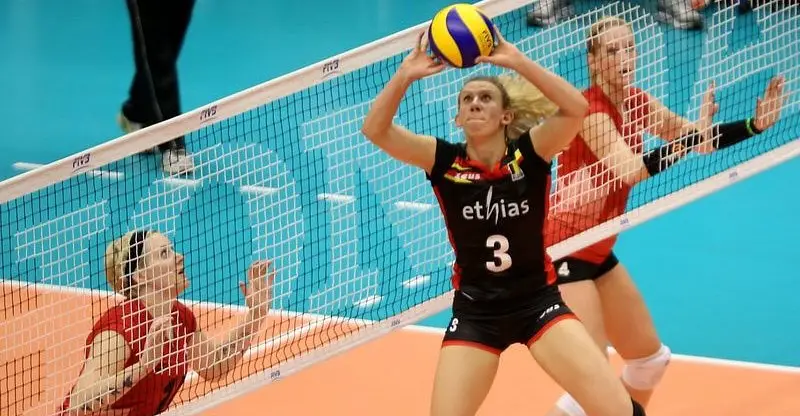The Setter Volleyball Position – 5 Marks Of A Great Player
The setter volleyball position is typically considered one of the most important, and takes someone who is really dialed into the game and can act as a leader on the court.
Depending on the player who plays in this volleyball position, they can either significantly improve the team or break it. It comes as no surprise, therefore, that it is a position that is absolutely vital to a team’s overall success and one that coaches have to get spot on.
We believe that there are 5 keys that make up every great player who has ever played in this position.
Leadership Skills
A setter often acts as the captain of the team, so it is very important that they possess excellent leadership and communication skills. The player who plays in this position regularly acts as the go-between the coach and the other players on the team.
Therefore, a setter can’t be afraid to voice their opinion, even if it is in direct contrast to what the coach thinks, and ask a lot of questions to make sure that what the coach requires is explicitly clear.
A setter is also directly responsible for their team’s success on offense, so is given the task of calling the players, setting up hitters, and noticing the strengths and weaknesses of the opposition so the player they set to can take full advantage.
A cool, calm and confident setter brings a lot of confidence to their team, even if they may not be feeling it themselves, because a setter is considered as the quarterback of volleyball.
Mindset
As just mentioned, a setter needs to be cool, calm and confident, but why exactly is this? Well, there are several reasons.
Firstly, a setter’s teammates look up to this position in providing them guidance, even when things get tough. For example, a team may be losing and start to lose motivation, but it is the setter who most of all treats each point as independent from the other and remains calm on the outside.
Teammates seeing their captain on court remaining calm makes them less anxious in turn and can ensure that each point is played to the best of their ability without anything clouding their judgment.
Some positions in volleyball just seem to get blamed more than others, even though the player may not have been at fault. The setter is one of these positions, as they often get blamed for a bad set when the hitter isn’t successful, even though it really may have been the hitter’s or passer’s fault.
A good setter, therefore, takes responsibility and gets going on with the game without arguing with others.
Game Reading Ability
As mentioned, a setter needs to be alert and notice the strengths and weaknesses of the opposition. This is done so a ball can be set in such a way that it maximizes the chance of the team winning the point.
A setter also, however, needs to be able to read their own teammates. For example, certain hitters on the team may prefer to be set higher balls or on a certain side of the volleyball net. While a natural game reading ability is important, it is also wise to never hesitate to ask questions and take in feedback, both positive and negative.
Athleticism
It’s always an advantage for any volleyball player, regardless of position to be naturally athletic, but there are other things that can be worked on that aren’t dependent on genes.
For example, a setter can’t do anything about their height, but what they can do is to hit the gym and run drills to improve their vertical jump, conditioning and quickness out there on the court. Good volleyball shoes can also help in moving around the court better.
This results in being able to set better, particularly when they have to set off a bad pass that used to be hard to get to before working on their athleticism.
Ball Handling Skills
Someone who is able to play this volleyball position well has excellent ball handling skills, more specifically a soft touch.
It’s great to be athletic and get to the ball a high percentage of the time, but dealing with bad passes that are hard to set well is a whole other challenge, particularly as it’s all too rare that a setter will get a perfect pass right to them.

